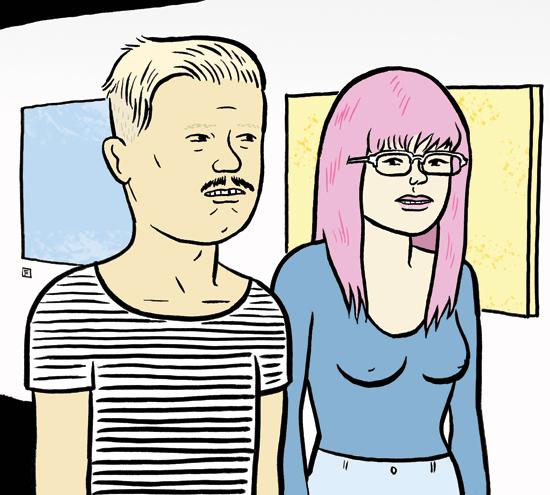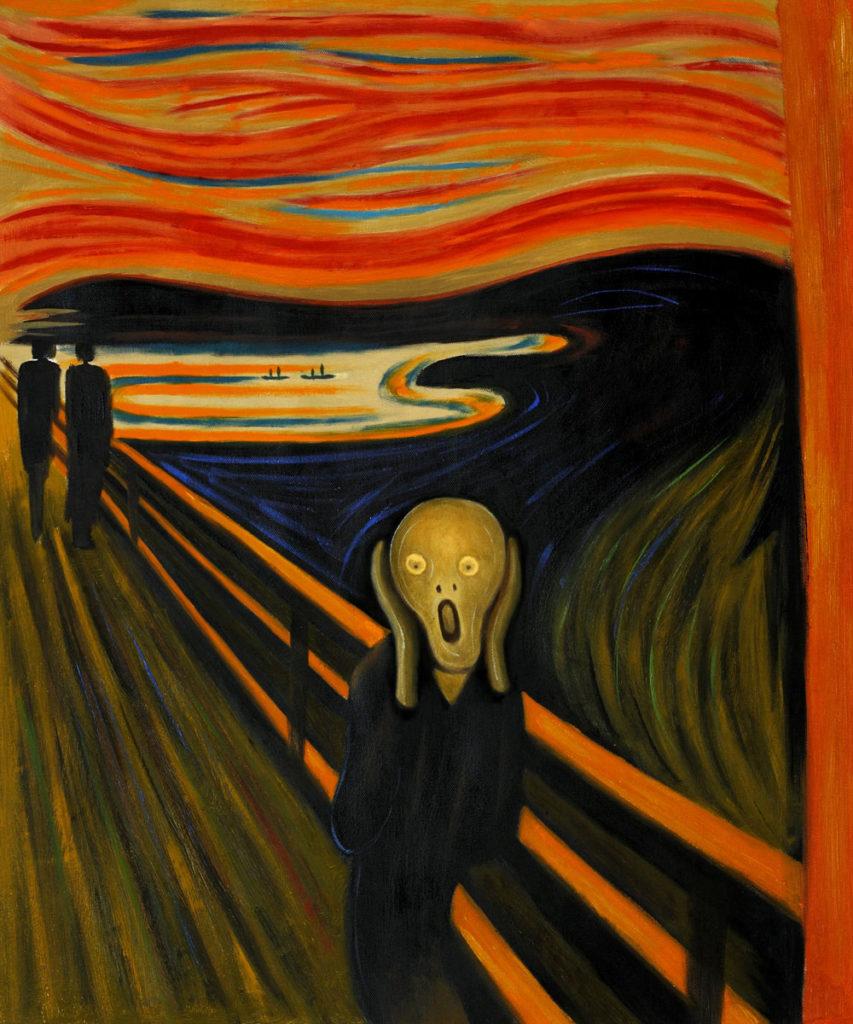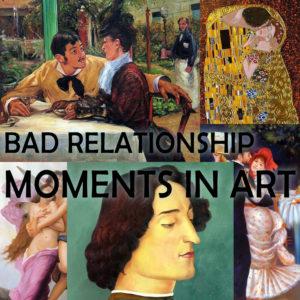Art Reflections
Art Date 101: A Guide to Help You Mingle and Talk Art on a Date Part 2
Gallery openings and museums have become a popular first date for many of us “urban daters”. Unfortunately, not many of us know what to say when it comes to “art talk”, and we dread the thought of us saying something really dumb in front of the lady we want to impress. In this post, you will be introduced to the principle of repetition and rhythm in composition and how it makes art “work.” If used in the right context, at the right moment, simply dropping the words “rhythm” and “composition” might make the date a huge success!

The Principle of Repetition and Rhythm in Composition
The principle of repetition and rhythm in composition refer to how such elements as line, shape, value, color, and space create the suggestion of motion, often through the repeated use of one or more elements. This principle is put into affect when you notice your eye moving around the canvas, the elements create a visual echo which moves the eye across the picture plane—a visual Rhythm.
When observing Repetition and Rhythm in fine art, you will notice variations in how the principle is used. Some elements are placed equidistant from one another. Some elements are larger in the picture plane than others. Some elements are the same shape and size but different colors. Some arrangements may form their own patterns, creating a visual rhythm.
Rhythm can be classified in loose terms as random, regular, alternating, flowing, and progressive. One or more types of rhythm can function in the same composition.
- Random Rhythm occurs when there is no apparent regularity or consistency among the repeated elements of a composition.
- Regular Rhythm occurs when there is a consistent regularity among the repeated elements of a composition. Think of wallpaper with a single colored rose placed equidistant from the others. This singular element of the rose is repeated but in a very exact order.
- Alternating Rhythm occurs when various elements or motifs are alternated, such as the red and black squares of a checkerboard. The elements may be flipped, mirrored, or rotated to change up a basic repetition or rhythm. It can be thought of as a more advanced form of Regular Rhythm.
- Flowing Rhythm occurs when repeated elements undulate, such as in their shape or line curvature. The effect can even been achieved with how paint is blended by brushstroke.
- Progressive Rhythm occurs when an element transforms slightly as it repeats across the picture plane in a steady sequence. This type of rhythm is usually seen in Cubism.
 In Edvard Munch’s The Scream (above right) there are several types of repetition and rhythm occurring in the composition. We see a random rhythm though the use of straight and undulating brushstrokes, loose line is definitely a repeated element here through the use of brushstroke. We see a flowing rhythm with the use of an undulating brushstroke the upper right half of the composition.
In Edvard Munch’s The Scream (above right) there are several types of repetition and rhythm occurring in the composition. We see a random rhythm though the use of straight and undulating brushstrokes, loose line is definitely a repeated element here through the use of brushstroke. We see a flowing rhythm with the use of an undulating brushstroke the upper right half of the composition.
Applying Repetition and Rhythm to Mood in Art Speak
The principle of repetition and rhythm can also communicate mood within a composition. In Edvard Munch’s The Scream, this principle is particularly important to the Expressionism movement. Observe how Munch uses somewhat long brushstrokes of straight lines and flowing lines in the composition. The brushstrokes and their length provide some consistency. However the juxtaposition of the flowing and straight lines communicate an uneasiness in the piece, directing the eye to the screaming figure. These two different types lines represent the two different types of “reality” the figure is faced with. What is real and what is not real? What happens when our belief systems are shaken to the very core? What other interpretations can you derive from the use of repetition and rhythm in this piece?
What about other compositions? How are repetition and rhythm used in other compositions to achieve mood? To move the eye across the composition? Why? What types of rhythm do you see? In your perception, do you think the artist is successful in the use of this principle in the composition?
So the next time your date turns to you and asks you “What do you think about this piece?” Look her square in the eyes and say: “I love the use of repetition… really sets the mood and makes the composition come to life!” Odds are she will be pleasantly impressed.
For more tips on an Art Date see what the visitors at the Maritime Museum had in mind:






